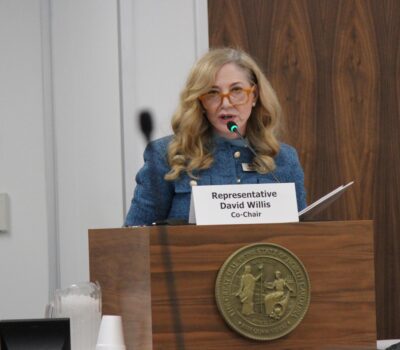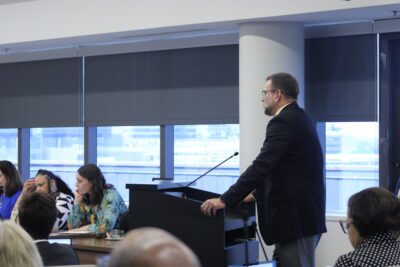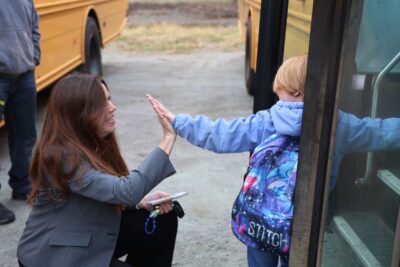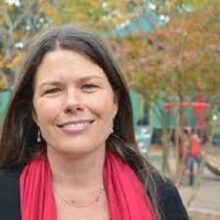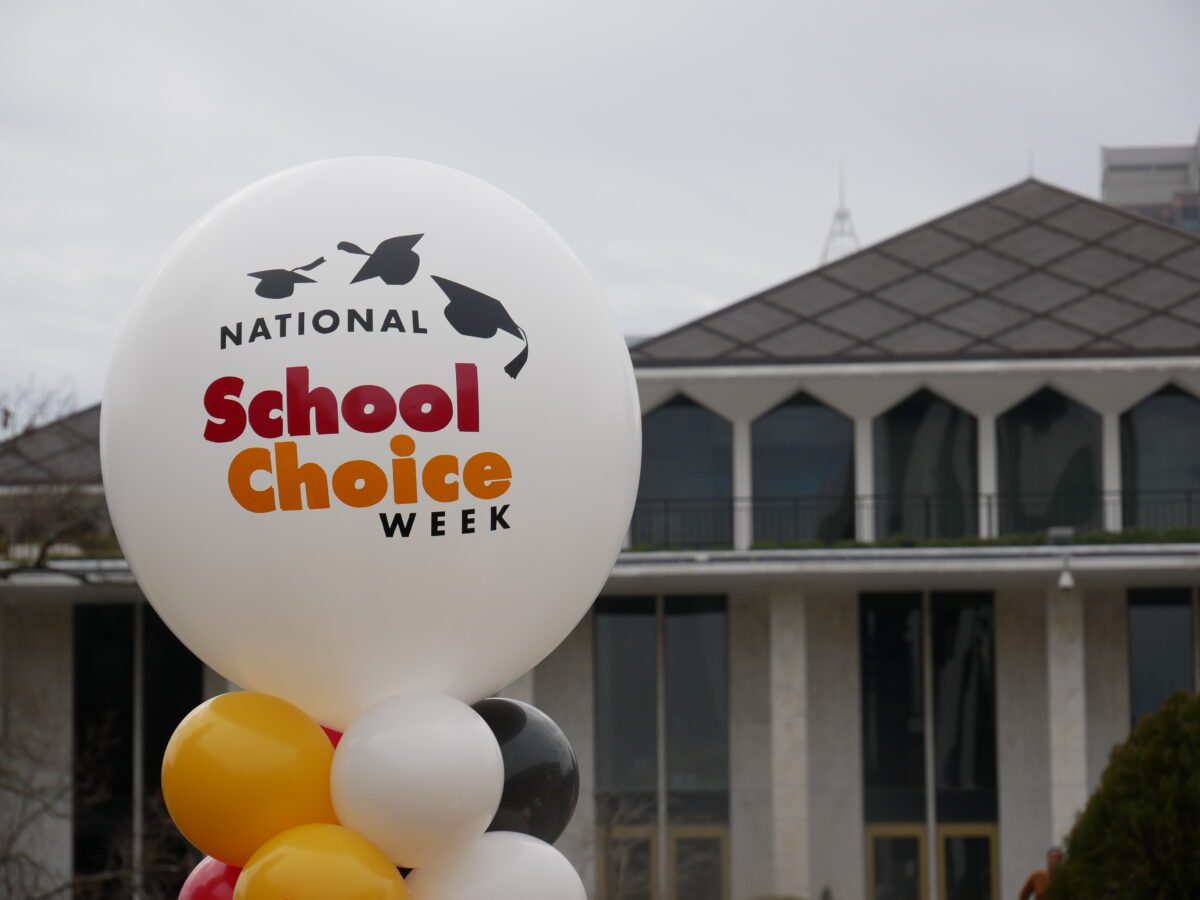
As of Oct. 6, 2025, the total number of students receiving vouchers in North Carolina is 98,917, according to new data, up from 80,472 at the end of 2024-25.
Of the 2025-26 recipients, 65,491 are students who renewed their voucher. That means almost 15,000 students who had vouchers in 2024-25 chose not renew.
With more school choice comes what researchers call “churn.”
“There are real, tangible impacts on a students’ learning and wellbeing at every churn — especially mid-year,” says an article published by the Fordham Institute titled, “School choice is great, but the churn it allows comes at a cost.”
Opportunity Scholarships are state-funded vouchers families can use to pay for eligible private schools. The North Carolina State Education Assistance Authority (NCSEAA) is the state agency designated by law to administer K-12 scholarship programs.
![]() Sign up for the EdDaily to start each weekday with the top education news.
Sign up for the EdDaily to start each weekday with the top education news.
NCSEAA previously reported it received 40,089 new applications for vouchers by the March 6, 2025 deadline — that’s 29,422 fewer than the previous year. The data indicate that there are 33,426 new recipients of vouchers in 2025-26 so far.
That so far is important because students don’t show up in the data until both the school and parent certify that the student is enrolled and attending the school.
NCSEAA has sent Opportunity Scholarship offers for the 2025-26 school year to eligible families that applied through early October.
The 2025-26 new student application currently remains open, according to NCSEAA, and the authority will continue to make awards each month in the order applications are received. New applications may be submitted from Oct. 1 through Dec. 31, 2025, for a scholarship award to start with the spring 2026 semester. Depending on household income, students may qualify for awards between $3,458 to $7,686 in 2025-26.
EdNC previously reported that market share is holding steady for public schools, which served 1,538,563 students — that’s 84% of all students — in the 2024-25 school year.
The data on vouchers
In 2023, the N.C. General Assembly passed a state budget that included what Republicans called the “largest expansion of school choice” in 10 years. Here you can see the growth in vouchers since inception in 2014-15, according to NCSEAA.

Demographic data on vouchers is often compared to data from 2023-24, the last year before the expansion.
In 2023-24, there were 32,549 recipients. Of those, 63% were white, and 15% were Hispanic. At that time, Cumberland County had the highest number of vouchers with 2,563 recipients receiving $15,308,534.
In 2025-26, to date, 75% of recipients are white, and 10% are Hispanic. Wake County now has the highest number of vouchers with 13,840 recipients receiving $34,272,874. Allegheny County has the fewest with one voucher recipient receiving $3,843. You can see the distribution across grades here.
North Raleigh Christian Academy currently receives the most funding at $3,094,928.
Here are the other private schools receiving more than $2 million:
- Burlington Christian Academy
- Concord Academy
- Fayetteville Christian School
- Gaston Christian School
- Grace Christian School
- Hickory Grove Christian School
- Liberty Christian Academy
- Metrolina Christian Academy
- Wesleyan Christian Academy
According to this report from the N.C. Department of Public Instruction, just 8.4% of the recipients in 2024-25 (at the time the data were analyzed) were students who attended a public school the year before, meaning most new beneficiaries of the program were already in private schools before receiving vouchers.
You can see how many students received vouchers by income tier last year here.
Other things to know about vouchers
The shift in policy to universal vouchers
Opportunity Scholarships are state-funded vouchers that families can use to pay for eligible private schools. You can see the current list of eligible private schools here.
The state’s private school voucher program previously served low-income students. The 2023 budget removed income eligibility requirements for recipients, starting with the 2024-25 school year. Now, household income determines the amount of the scholarship — you can see the tiers here — and also impacts the lottery process.
North Carolina’s voucher system is universal in that there are no income-restrictions to receiving a voucher, but the amount received by a recipient does depend on family income.
The expansion increased funding for vouchers to $4.4 billion over the next decade — an increase of $1.9 billion.
Understanding the difference between the number of applications and the number of scholarships disbursed
The number of scholarships disbursed usually is lower than the number offered. Why?
Some recipients of new scholarships decline them. Some may not have been admitted to the school of their choice. Some may not have enrolled after all.
Families have until July 1 to respond to renewal award offers, and some students choose not to renew their scholarship.
As previously mentioned, some scholarships just may not have been disbursed yet. Students don’t show up in the data until both the school and parent certify that the student is enrolled and attending the school.
Other financial considerations
Students who accept the voucher forgo the local and federal investments in their education. Here, you can see federal, state, and local per-pupil expenditure by district with dollars for child nutrition included.
For students who had been attending public school, the school districts — whose revenue is based on the number of students served — lose the full per-pupil expenditure across local, state, and federal funding for these students.
The legislation expanding school choice said, “it is the intent of the General Assembly to reinvest in the public schools any savings realized by the State each year” when a student accepts a scholarship “that is less than 100% of the average State per pupil allocation for average daily membership for a student in a public school unit.” This June 2025 report finds “the difference between the scholarship grant award amount and the average State per-pupil allocation was $10,092,663.” More information continues to be needed on where these dollars will be held and how they will be managed and dispersed.
Michael Petrilli, president of the Fordham Institute, in an article titled, “School choice need not mean an expensive windfall for the rich,” says under the surface of school choice expansion, “an important debate is brewing: how to balance the drive for educational freedom with other essential values, including fairness and fiscal responsibility. Simply put: Must the expansion of school choice result in windfalls for America’s wealthiest families, particularly those that already send their children to fancy private schools? Especially when that means blowing big holes in state budgets?”
Broader trends to be aware of
In North Carolina, our state constitution mandates a “general and uniform system of free public schools.” In democracies around the world, according to the leading research on educational pluralism conducted by Ashley Rogers Berner at the John Hopkins School of Education, uniform isn’t the north star and states don’t exclusively deliver education. But where other countries build choice into their systems, they also build in quality control.
Quality, not accountability, is the word of choice.
The legislature has charged the recently established Office of Learning Research — led by Jeni Corn and part of the Collaboratory at UNC — to recommend a nationally standardized test for use in third and eighth grade by private and public schools for 2026-27. For more information, see section 3J.23 of this bill.
A necessary first step, that in and of itself does not guarantee quality or accountability. EdNC joined a delegation from California that was in Boston looking at how the public schools there have more comprehensively partnered with religious schools, including in the areas of testing, professional development, and curriculum.
Berner talks about why school choice isn’t enough, and why academic content needs to change and expectations need to increase regardless of setting.
“To be blunt, a libertarian, let-a-thousand-flowers-bloom approach,” she says, is unlikely to move important data points at scale. She has interesting things to say about curriculum — think of the big bet Jackson County made on the Wit & Wisdom curriculum under the leadership of Superintendent Dana Ayers.
Choice in the context of “school choice” is a political term. It’s not how parents talk or think. All over the world, parents use the word “fit” to describe how they select a school for their child.
Because fit matters to parents, with school choice comes more “churn,” sometimes also called “swirl.” Researchers are calling for educational navigators, formal transfer windows, and better, more accessible information about schools for parents making the decisions.
Ray Gronberg with the NC Tribune first reported on how the race between Senate President Pro Tempore Phil Berger and Sam Page will feature key differences in school choice between Republican candidates.
Berger favors “universal school choice.”
Page’s website says he believes school “vouchers should be targeted to families who need them most.” That means, writes Gronberg, “income caps on school voucher eligibility to help working families, not the wealthy” and “policies to prevent private schools from inflating tuition due to vouchers.”
A note about the data
NCSEAA updates data on vouchers at the beginning of each month. Bookmark this page. The most recent data is at the top. If you scroll down, you will see data from previous years.
In the upper left corner of the current data, notice two tabs: county and school data, and then to the right demographic and historic data.
On the first tab, there is a map. You can hover on a county and see the number of recipients and total dollars disbursed. To the right of the map, you can see a column of data with the eligible schools and how much money they each receive. You can click the column header to reorder the schools alphabetically or by dollars disbursed.
On the second tab, you can find the new recipient and renewal data; data by race, ethnicity, and grade; and historic enrollment data.
On either tab, you can click the blue button to download an Excel spreadsheet.
Recommended reading
